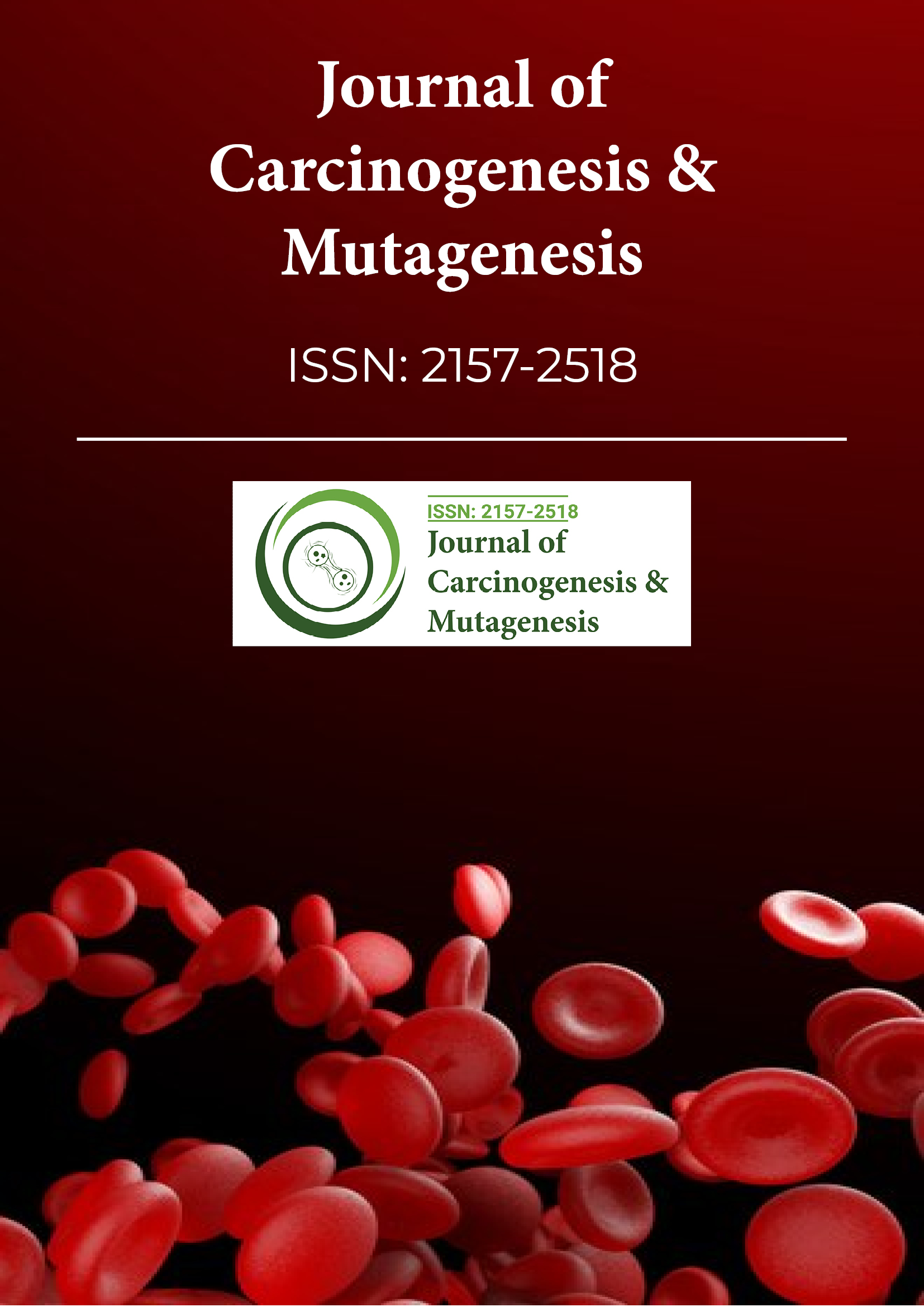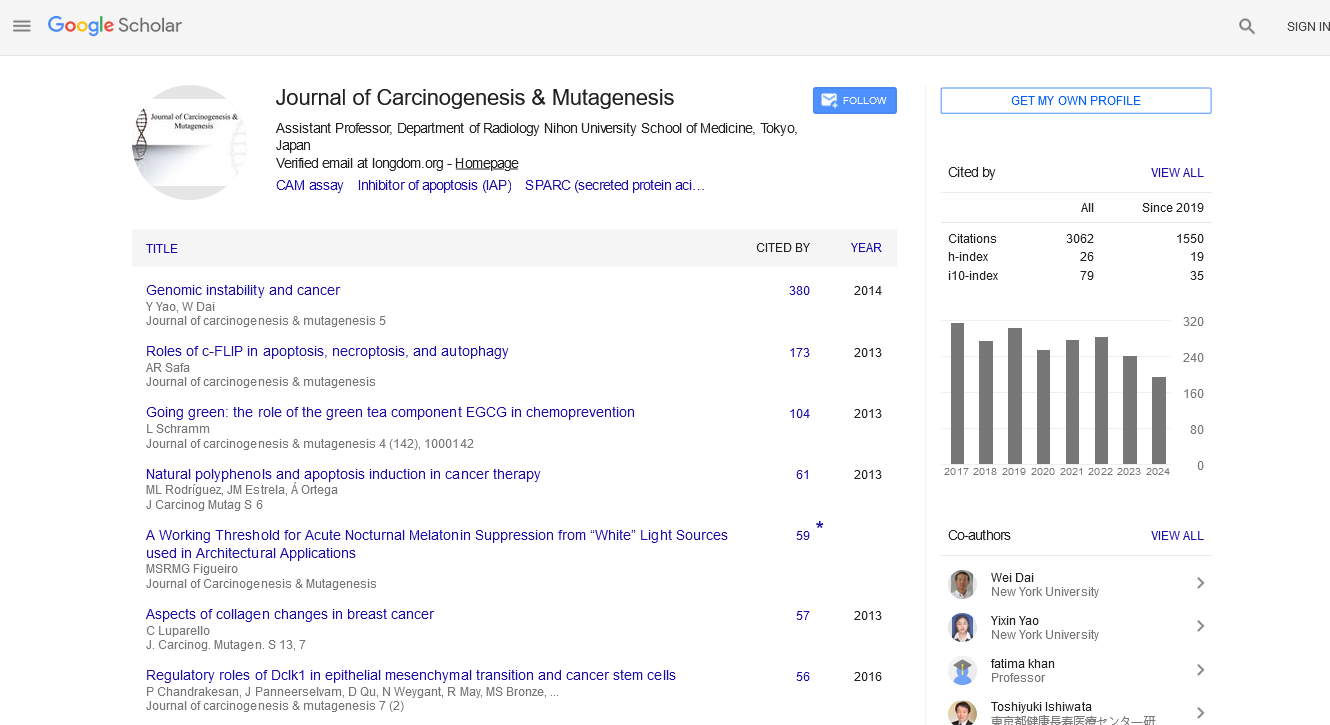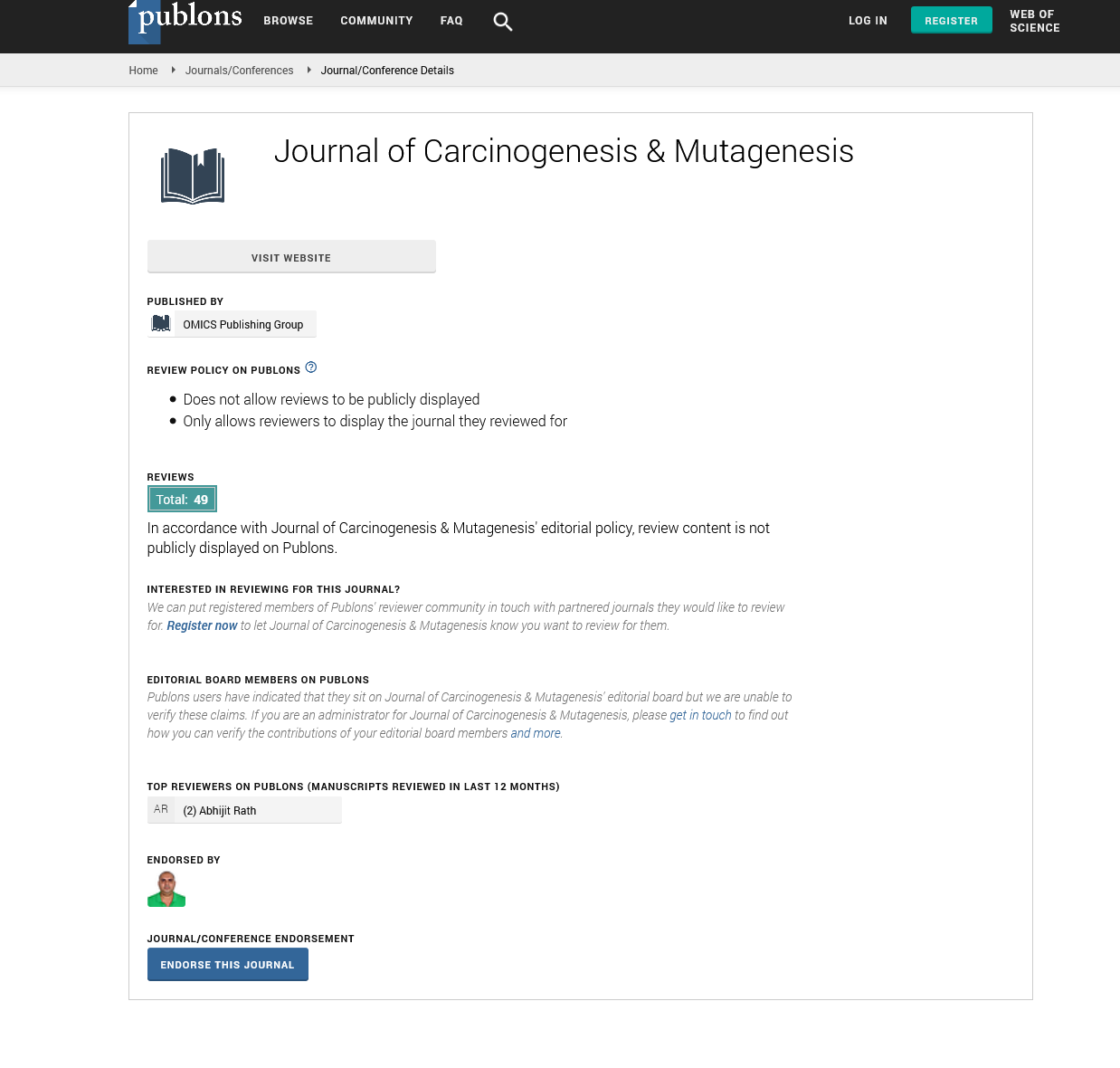Indexed In
- Open J Gate
- Genamics JournalSeek
- JournalTOCs
- Ulrich's Periodicals Directory
- RefSeek
- Hamdard University
- EBSCO A-Z
- OCLC- WorldCat
- Publons
- Geneva Foundation for Medical Education and Research
- Euro Pub
- Google Scholar
Useful Links
Share This Page
Journal Flyer

Open Access Journals
- Agri and Aquaculture
- Biochemistry
- Bioinformatics & Systems Biology
- Business & Management
- Chemistry
- Clinical Sciences
- Engineering
- Food & Nutrition
- General Science
- Genetics & Molecular Biology
- Immunology & Microbiology
- Medical Sciences
- Neuroscience & Psychology
- Nursing & Health Care
- Pharmaceutical Sciences
Commentary - (2021) Volume 12, Issue 5
Potential Impact of Pehllinus linteus in Clinical Oncology of Pancreatic Cancer
Chang Moo Kang*Received: 03-Sep-2021 Published: 24-Oct-2021, DOI: 10.35248/2157-2518.21.12.369
Description
Pancreatic cancer is one of the lethal malignant diseases in gastrointestinal tract. In order to ensure long-term survival outcomes, radical pancreatectomy followed by adjuvant chemoterhapy is mandatory. Recent literatures reporting longterm favorable oncologic outcomes of new potent chemotherapeutic agents paved the way for improving survival of pancreatic cancer [1-4].
We previously reviewed and suggested potential role of Pehllinus linteus (PL) in treating pancreatic cancer [5]. In this report, we summarized oncologic effects of PL on pancreatic cancer, such as, anticancer effect, immunomodulation, inhibition of metastasis, induction of apoptosis, and inhibition of angiogenesis, showing clinical trend toward long-term diseasefree survival in resected pancreatic cancer. In addition, recent investigation revealed that Hispidin, a polyphenolic compound mainly derived from PL, could play a role as a novel chemosensitizer for gemcitabine and provide potential synergistic for increasing the therapeutic index of gemcitabine in treating pancreatic cancer and even pancreatic cancer stem cell [6]. It is known that pancreatic cancer stem cells are responsible for sustaining tumor formation, metastasis, and chemoresistance of pancreatic cancer.
A potentially applicable clinical strategy for PL might be using PL as an adjuvant in combination with cytotoxic anticancer agents. However, clinical studies on the feasibility and rationale of PL as a combination anti-cancer treatment are lacking. As a potential synergetic effect with chemotherapeutic agents, our early experiences of use of PL extract with postoperative adjuvant chemotherapy in resected pancreatic cancer showed favorable disease-free survival (11 months, vs. 2.8 month, p=0.017), but similar overall survival [5]. With accumulating experiences of PL use in clinical oncology, recently we demonstrated that PL extract potentially contributed to long-term oncologic outcomes in resected pancreatic cancer [7]. According to the results, 161 patients received adjuvant treatment after curative resection for pancreatic cancer. Cox’s proportional hazard models revealed that nodal metastasis, perioperative transfusion, and completion of adjuvant treatment were significantly correlated with cancer recurrence and cancer-related death (P<0.05). In addition, Phellinus linteus (PL) medication was the only significant predictor for completion of adjuvant treatment after curative resection in logistic regression analysis (Adjusted OR=2.141 [95% CI:1.039-4.411], P=0.039). Disease-free (33 vs. 12 months, P=0.038), and overall survival (39 vs. 18 months, P=0.012) of the PL medication group were significantly higher than the no PL medication group in patients with resected pancreatic cancer followed by postoperative adjuvant chemotherapy, concluding PL medication potentially contributed to long-term oncologic outcomes by increasing patients’ adherence to postoperative adjuvant chemotherapy by reducing toxicity and increasing completeness of adjuvant chemotherapy. However, only PL without postoperative adjuvant chemotherapy failed to show improving long-term survival outcomes. As far as authors know, this clinical study is thought to be the first to successfully showed potential advantage of PL in clinical practice of pancreatic cancer.
Especially, FOLFIRINOX is known to be one of the potent chemotherapeutic regimens in treating pancreatic cancer, but limited due to severe potential toxicity [1]. Therefore, not only developing new potent anticancer agents but also “chemoadjuvant” medication, such as, PL extract, for reducing chemotherapy-related toxicity and improving compliance of chemotherapeutic agents will potentiate the anticancer property of potent chemotherapeutic agents, hopefully, improving longterm prognosis of pancreatic cancer in near future. Larger volume-based well-designed prospective randomized study on the adjunctive use of PL extraction to standard therapy for resectable pancreatic cancer will confirm this observation and hypothesis.
Usually, postoperative adjuvant chemotherapy initiated around 1-2 months after surgery due to recovery form major surgical trauma. Considering biological behavior of resected pancreatic cancer, it is hypothesized that this window period between radical pancreatectomy and subsequent postoperative adjuvant chemotherapy might provide potential environment for residual pancreatic cancer cells to be ready for propagation. According to our experiences, there are very few complications related to PL extract. This kind of medication is thought to be initiated as early as possible after curative pancreatectomy. This kind of clinical practice will be helpful for improving prognosis of resected pancreatic cancer? Further study is mandatory including well-designed prospective randomized control study on this issue.
REFERENCES
- Conroy T, Desseigne F, Ychou M, Bouché O, Guimbaud R, Bécouarn Y, et al. Folfirinox versus gemcitabine for metastatic pancreatic cancer. N Engl J Med. 2011;364(19):1817-1825.
- Conroy T, Hammel P, Hebbar M, Ben Abdelghani M, Wei AC, Raoul JL, et al. Folfirinox or gemcitabine as adjuvant therapy for pancreatic cancer. N Engl J Med. 2018;379(12):2395-2406.
- Suker M, Beumer BR, Sadot E, Marthey L, Faris JE, Mellon EA, et al. Folfirinox for locally advanced pancreatic cancer: a systematic review and patient-level meta-analysis. Lancet Oncol. 2016;17(6):801-810.
- Janssen QP, Buettner S, Suker M, Beumer BR, Addeo P, Bachellier P, et al. Neoadjuvant folfirinox in Patients With Borderline Resectable Pancreatic Cancer: A Systematic Review and Patient-Level Meta-Analysis. J Natl Cancer Inst. 2019;111(8):782-794.
- Kang CM HD, Hwnag HK, Choi SH, Lee WJ Anticancer Effect of Phellinus linteus; Potential Clinical Application in Treating Pancreatic Ductal Adenocarcinoma. JCarcinog Mutagen. 2013;S9:1-8.
- Chandimali N, Huynh DL, Jin WY, Kwon T. Combination Effects of Hispidin and Gemcitabine via Inhibition of Stemness in Pancreatic Cancer Stem Cells. Anticancer Res. 2018;38(7):3967-3975.
- Lee SH, Hwang HK, Kang CM, Lee WJ. Potential Impact of Phellinus linteus on Adherence to Adjuvant Treatment After Curative Resection of Pancreatic Ductal Adenocarcinoma: Outcomes of a Propensity Score-Matched Analysis. Integr Cancer Ther. 2019;18(12):1534735418816825.
Citation: Kang CM (2021) Potential Impact of Pehllinus linteus in Clinical Oncology of Pancreatic Cancer. J Carcinog Mutagen. 12: 369.
Copyright: © 2021 Kang CM. This is an open-access article distributed under the terms of the Creative Commons Attribution License, which permits unrestricted use, distribution and reproduction in any medium, provided the original author and source are credited.


